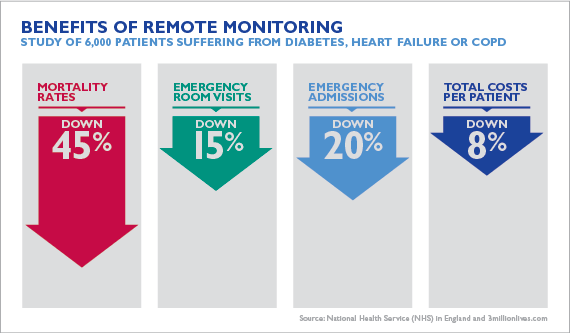Telehealth solutions improve care and lower costs
Telecommunications allow healthcare professionals to practice remotely
Another new trend is the use of telecommunications technologies such as videoconferencing, shared imaging and streamed media for patient care, collaboration between physicians and public health education. Known as telehealth, it allows physicians and hospitals to provide healthcare at a distance. According to Nicola Ziady, the Director of Marketing & Communications at St Jude Children’s Research Hospital, investing in telehealth is key for the success of hospitals because it lowers cost and allows physicians to reach more patients.
Lowering costs of healthcare through telehealth
The National Health Service (NHS) in England conducted a pilot study where they monitored more than 6,000 patients in three cities that were using remote monitoring. Through this study, they found that mortality rates decreased by 45%, and there was a significant reduction in emergency room visits, admissions and total costs per patient.

The Department of Veterans Affairs published a study about the savings that telehealth created for its patients. The study found that patients who stayed at home with biometric devices to monitor and record their vitals had a 25% decrease in the number of days confined to bed and a 19% decrease in hospital admissions.
The average cost per patient per year in the Veterans Affairs monitoring program is $1,600, whereas the cost to provide home-based primary care is $13,121 and the cost for nursing home care is $77,745.
Are you ready for the future of mHealth?
Does your hospital or physician practice have a plan to integrate mHealth into your marketing strategy? If not, now is a good time to start thinking about it since consumers are already using these platforms to manage their health.
